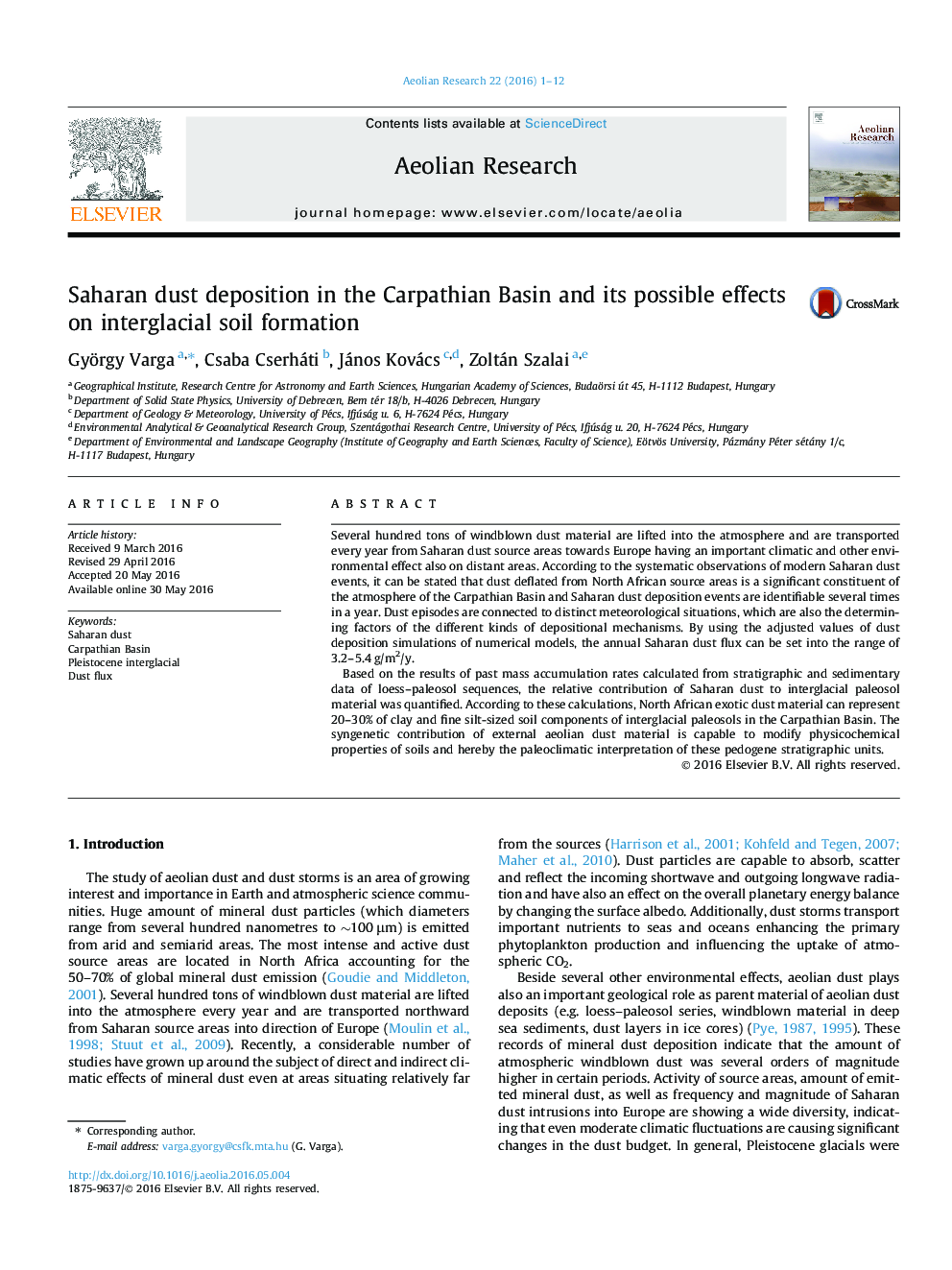| Article ID | Journal | Published Year | Pages | File Type |
|---|---|---|---|---|
| 6426222 | Aeolian Research | 2016 | 12 Pages |
â¢Saharan dust events are frequent in the Carpathian Basin also during interglacials.â¢Annual Saharan dust flux can be set into the range of 3.2-5.4 g/m2/y.â¢Admixture of Saharan dust material has a major influence on soil-formation.â¢Saharan dust material represents 20-30% of fine-grained components of paleosols.
Several hundred tons of windblown dust material are lifted into the atmosphere and are transported every year from Saharan dust source areas towards Europe having an important climatic and other environmental effect also on distant areas. According to the systematic observations of modern Saharan dust events, it can be stated that dust deflated from North African source areas is a significant constituent of the atmosphere of the Carpathian Basin and Saharan dust deposition events are identifiable several times in a year. Dust episodes are connected to distinct meteorological situations, which are also the determining factors of the different kinds of depositional mechanisms. By using the adjusted values of dust deposition simulations of numerical models, the annual Saharan dust flux can be set into the range of 3.2-5.4Â g/m2/y.Based on the results of past mass accumulation rates calculated from stratigraphic and sedimentary data of loess-paleosol sequences, the relative contribution of Saharan dust to interglacial paleosol material was quantified. According to these calculations, North African exotic dust material can represent 20-30% of clay and fine silt-sized soil components of interglacial paleosols in the Carpathian Basin. The syngenetic contribution of external aeolian dust material is capable to modify physicochemical properties of soils and hereby the paleoclimatic interpretation of these pedogene stratigraphic units.
